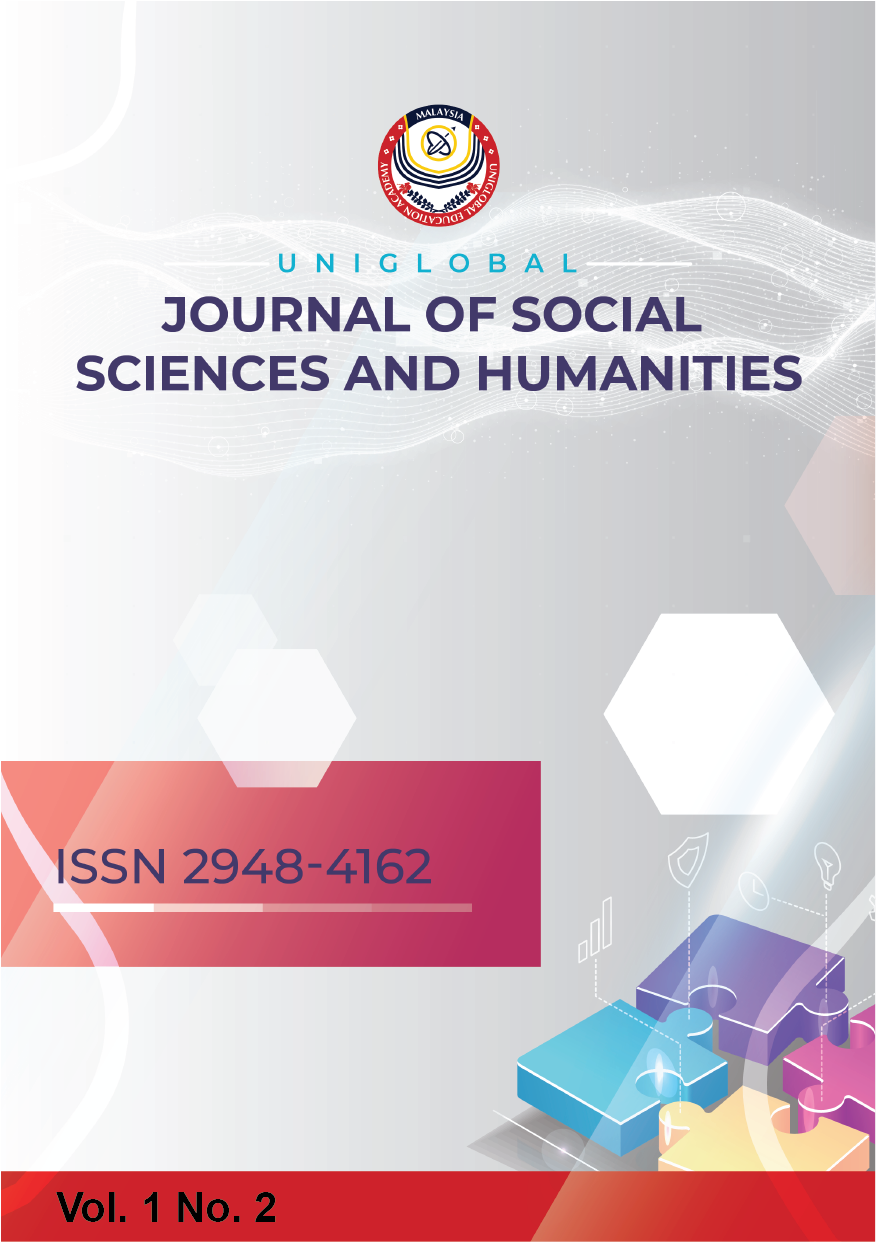The Effectiveness of The Blended Learning Model Application to Student Learning Outcomes in The Science Study for Elementary School
DOI:
https://doi.org/10.53797/ujssh.v1i2.5.2022Keywords:
Blended learning, student learning outcome, science studyAbstract
The purpose of this study was to determine the effectiveness of the application of the blended learning model on the learning outcomes of class VI students in science lessons. This research uses experimental research methods. The subjects in this study were students of class VIC Private Elementary School Nurul Huda Desa Katonsari Demak with a total of 28 students as the experimental class and Class VIA Public Elementary School No. 2 Sidomulyo Wonosalam Demak with 22 students as the control class. The results of the N-Gain score test showed that the experimental class (by applying the blended learning model) obtained an average N-Gain score of 71.88%, which was included in the 'Quite effective' category. Meanwhile, the application of the conventional model to the control class obtained an average N-Gain score of 39.30% in the category of 'Ineffective'. While the effectiveness test uses the paired sample t-test, it is known that the significance value (2-tailed) is 0.000 <0.05. In addition to the significance value, the value of t count> t-table is 26.002> 2.052. From these results, it can be concluded that the application of the blended learning model significantly impacts student learning outcomes in science lessons in grade VI elementary schools.
References
Kundu, A. (2018). Blended learning in Indian elementary education: Problems and prospects. Journal of Online Learning Research, 4(2), 199-227.
Kusuma, D., Murtono, & Utomo, S. (2022). The Effectiveness of Blended Learning Assisted by Interactive PowerPoint on Student Achievement of Elementary School Students in Bintarum Group, Demak District. ANP Journal of Social Science and Humanities , 3, 47-53. https://doi.org/10.53797/anp.jssh.v3sp2.6.2022
Ma, Z., Idris, S., Zhang, Y., Zewen, L., Wali, A., Ji, Y., ... & Baloch, Z. (2021). The impact of COVID-19 pandemic outbreak on education and mental health of Chinese children aged 7–15 years: an online survey. BMC pediatrics, 21(1), 1-8.
Mackenzie, J. S., & Smith, D. W. (2020). COVID-19: a novel zoonotic disease caused by a coronavirus from China: what we know and what we don’t. Microbiology Australia, 41(1), 45-50.
Panjaitan, R., Murniarti, E., & Sihotang, H. (2021). Learning Plan with Blended Learning in Elemetary School. Advances in Social Sciences Research Journal, 8(2), 558-573.
Putria, H., Maula, L. H., & Uswatun, D. A. (2020). Analysis of the Online Learning Process (DARING) during the COVID-19 Pandemic in Elementary School Teachers. Basicedu's Journal.
Sequeira, A. H. (2012). Introduction to concepts of teaching and learning. Available at SSRN 2150166.
Sugiyono, P. D. (2017). Metode penelitian bisnis: pendekatan kuantitatif, kualitatif, kombinasi, dan R&D. Penerbit CV. Alfabeta: Bandung, 225.
Sugiyono, M. (2015). penelitian & pengembangan (Research and Development/R&D). Bandung: Penerbit Alfabeta.
Taurina, Z. (2015). Students’ motivation and learning outcomes: Significant factors in internal study quality assurance system. International Journal for Cross-Disciplinary Subjects in Education (IJCDSE), 5(4), 2625-2630.
Untari, A. D., & Millatussa’adiyyah, A. (2020, March). Implementation of Blended Learning Through Google Classroom in Generation Z. In 1st International Multidisciplinary Conference on Education, Technology, and Engineering (IMCETE 2019) (pp. 161-165). Atlantis Press.
Usman, U. (2018). Komunikasi Pendidikan Berbasis Blended Learning Dalam Membentuk Kemandirian Belajar. Jurnal Jurnalisa, 4(1).
Wahyudi, W., & Winanto, A. (2018). Development of project based blended learning (PjB2L) model to increase pre-service primary teacher creativity. Jurnal Pendidikan dan Pengajaran, 51(2), 93-109.
World Health Organization (WHO), 2. (2020). Coronavirus disease (COVID-19), 12 October 2020.
Yelland, N. (2001). Teaching and learning with information and communication technologies (ICT) for numeracy in the early childhood and primary years of schooling. Australia: Department of Education, Training and Youth Affairs.
Downloads
Published
How to Cite
Issue
Section
License
Copyright (c) 2022 Roudlotul Halimi

This work is licensed under a Creative Commons Attribution-NonCommercial-ShareAlike 4.0 International License.



